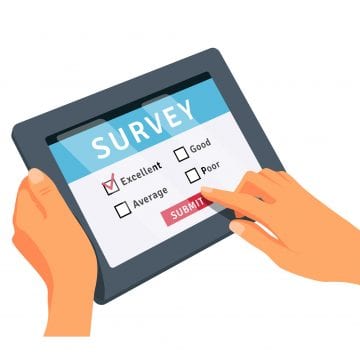Surveys are an excellent method to collect information for your organisation. It can tell you so much about the aspects that you can’t measure otherwise. For instance, how do your customers feel about your business? While you can look at reviews, a customer is 17 times more likely to leave a negative review than a positive one. Therefore, do you know what customers are saying?
The big question is about the size of the survey. How many respondents do you need before you can rely on your data from respondents? And what do you need to consider when it comes to determining the survey population size?
1. Accurate data
One of the biggest problems is that you want to collect a lot of data to guarantee the accuracy of the results. If you collate 50 responses, just another ten respondents could completely sway the results. Yet if you collected 500 responses, another ten would barely affect the results.
In the first instance, you could argue that the data might not be accurate. In the second instance, 500 responses would increase accuracy.
The fact remains that the larger the survey response population, the more accurate your data is going to be. But you don’t always have the luxury of getting lots of responses. For instance, for those that have small teams of employees, you might only get 10-15 respondents. To overcome this, you would need to think of other aspects, like the percentage of the population answering the survey.

2. The confidence level
A confidence level is the margin of error on a set of results that determines where the ‘true’ value is. For example, you ask an audience to rate a film they have just watched. The average rating is 4.5 out of 5. When you put your numerical responses on a graph, you can use the spreadsheets to work out the confidence level for you.
The confidence level, in this case, is plus or minus 0.1 so you can be sure if you asked everybody in the whole population to rate the film, that you would get between 4.4 and 4.6 as your average. The confidence level demonstrates that your survey of a small population is both accurate and a representation of the wider population.
2. Percentage of the population
Another thing to consider is the size of the population. You want to ensure that you’re getting a suitable proportion because it will give you more accuracy.
Any population of less than 100 potential participants, will require participants of about 30-40% at least. If you have less than 20 potential participants, then you need to have surveyed at least 80% of the audience, with 100% being the ideal.
In contrast, when you have a population of over 500 you can request just 10-20% of the audience to get accurate results. Over 10,000, it can be as low as 5-10%. Larger populations require even smaller survey groups.

3. Makeup of the audience
Another thing to consider is the demographics of your audience. If you’re a multisite retailer who has stores across a region, you might want to ensure that your surveys get large enough cross-section of the local audience for each store. What matters for the audience at one store might not at another. Nor could the experiences of their customers be the same.
One store might focus on cost while another might prefer convenience. You will need to take good sampling out of all these areas. Any variances will then be visible. Therefore, you are unlikely to make unnecessary changes that could cause you to lose customers at one store.
Another thing to consider is the demographics of the area. If you’ve got a large cross-section of society, then you might not get enough of certain groups to determine all the audience’s views. An example of this would be low-income versus high-income families. Their priorities for the service they get would be vastly different.
Within a business setting, the views would be different between front-line staff and senior management. If you didn’t take a representative sampling of all, then you could find that your results are biased to one group.
4. Interactions with your organisation
Another important aspect is to think about the interactions that audiences have with your organisation. One way to look at it is the products that an audience has bought from you. If you have a copious catalogue, then you might need to take more survey responses to get a good set of data.
Combating the bias made from a good or bad product affecting results will allow you to find which products or services customers like and which they don’t. If you know this, then you’ll be able to prioritise which services/products need changes and which you should promote.
Surveys provide you with the opportunity to improve your marketing by finding what is attracting and pleasing current customers and using this to market to potential markets.

5. Time scale
Another thing that might affect the number of respondents that you need is time. Which is more about logistics then it is about accuracy. The shorter the amount of time that you have to collect data, the smaller the number of responses you can expect to get.
Surveys should run over a good couple of weeks. Sometimes, however, you need to collect data immediately to find something out. Therefore, you have to settle for fewer responses than you would otherwise want.
When this happens, you must recognise that the data is more likely to have bias and inaccuracies within it. Acknowledge this in any reports.
Conclusion
When it comes to the accuracy of your information, one factor is always consistent: more data is better. There are many factors that can determine how many responses you need from a survey. As the population grows, the percentage of the audience you need to respond does get smaller. However, mistakes can always be present.
That is why it is always important to not just collect as many responses as possible, but be aware of the confidence levels. You will need the sample size and the standard deviation of the results to work this out. All of this can also be automatically calculated for you using spreadsheets like Excel, which survey apps like Tapapp can export results for you.
When you know the confidence levels, you can determine the true sentiments of your audience, take action and improve your business.
More in our blog:
